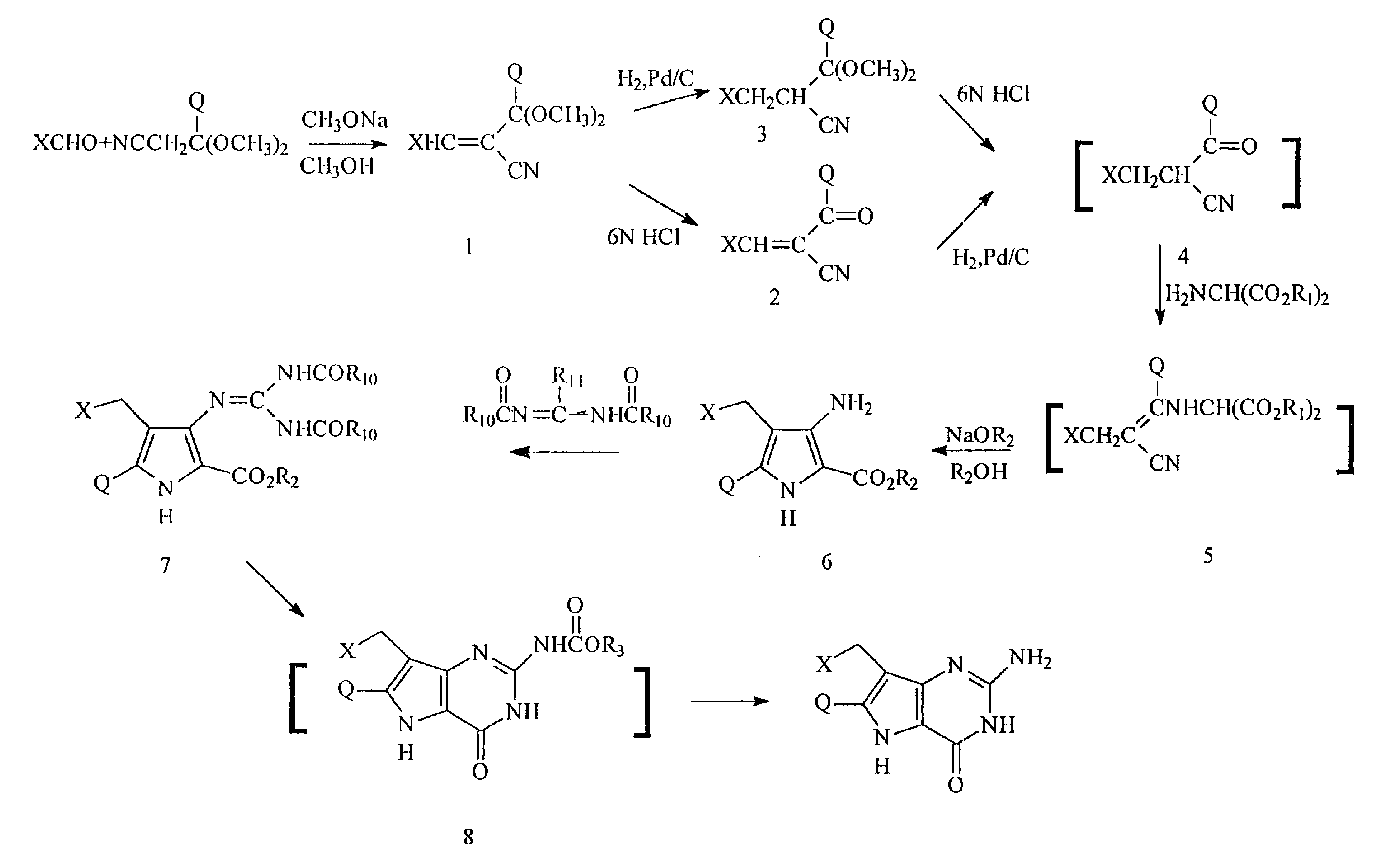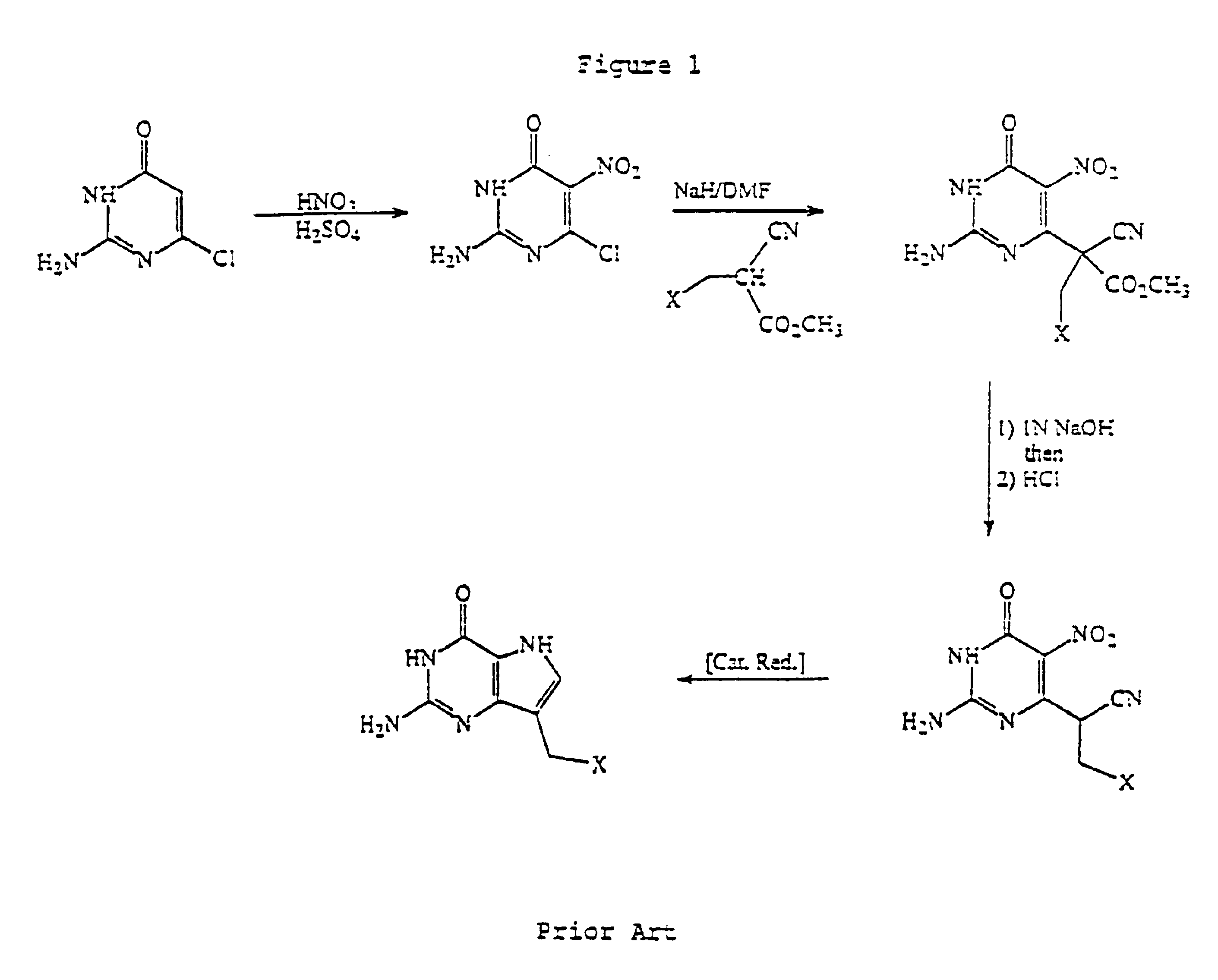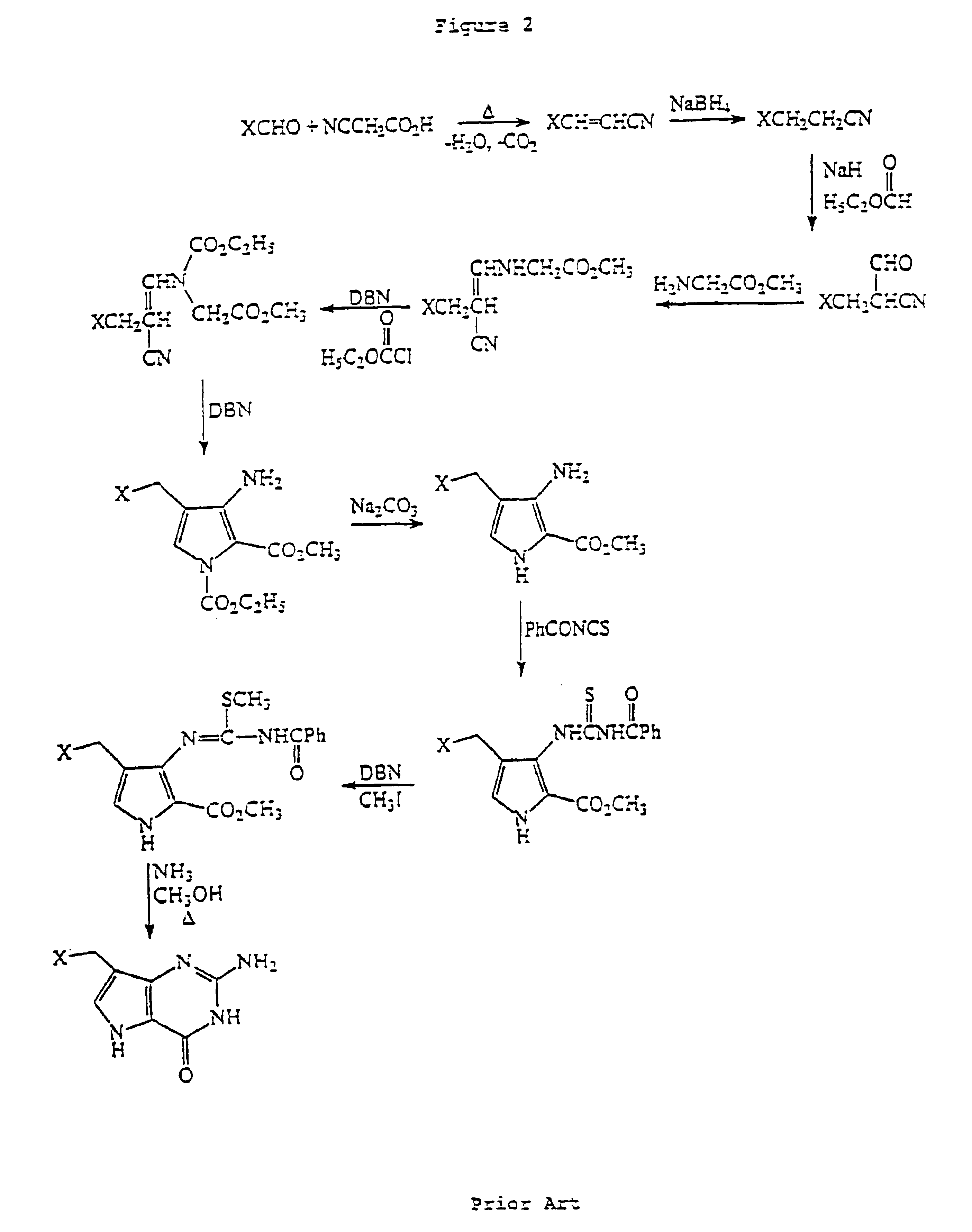Process for the preparation of 9-deazaguanine derivatives
a technology of deazaguanine and derivatives, which is applied in the field of production of deazaguanine derivatives, can solve the problems of poor overall yield, unsuitable for preparing a wide range of compounds, environmental pollution, etc., and achieve the effect of high overall yield of desired compounds and easy manipulation
- Summary
- Abstract
- Description
- Claims
- Application Information
AI Technical Summary
Benefits of technology
Problems solved by technology
Method used
Image
Examples
example 1
[0115]Preparation of:
2-(Dimethoxymethyl)-3-phenylacrylonitrile
[0116]Benzaldehyde (79.5 g, 0.75 mol) and 3,3-dimethoxypropionitrile (115.1 g, 1.0 mol) were mixed together and added to a solution of sodium methoxide (54.0 g, 1.0 mol) in methanol (400 mL) over a period of 15 minutes. The mixture was stirred at room temperature overnight. Most of the methanol was evaporated in vacuo and the residue was partitioned between ethyl acetate (500 mL) and water (450 mL). The organic layer was separated, washed with brine (400 mL), dried (MgSO4) and the solvent evaporated in vacuo. The residual oil was distilled to give 103 g (68%) of the product as a colorless oil, bp 125-130° C. (2 mm Hg).
[0117]Analysis: Calc. for C12H13NO2: C, 70.92; H, 6.45; N, 6.89. Found: C, 70.68; H, 6.50; N, 6.88.
example 2
[0118]Preparation of:
2-(Dimethoxymethyl)-3-(3-thienyl)acrylonitrile
[0119]Thiophene-3-carboxyaldehyde (50.0 g, 0.45 mol) and 3,3-dimethoxypropionitrile (80.5, g, 0.7 mol) were mixed together and added to a solution of sodium methoxide (37.8 g, 0.7 mol) in methanol (250 mL) over a period of 15 minutes. The mixture was stirred at room temperature overnight. Most of the methanol was evaporated in vacuo and the residue was partitioned between ethyl acetate (500 mL) and water (450 mL). The organic layer was separated, washed with brine (400 mL), dried (MgSO4) and the solvent evaporated in vacuo. The residual oil was distilled to give 65 g (69%) of the product as a colorless oil, bp 130-134° C. (2 mm Hg).
[0120]Analysis: Calc. for C10H11NO2: C, 57.40; H, 5.30; N, 6.70. Found: C, 57.53; H, 5.40; N, 6.71.
example 3
[0121]Preparation of:
2-(Dimethoxymethyl)-3-cyclohexylacrylonitrile
[0122]Cyclohexanecarboxaldehyde (50.0 g, 0.45 mol) was added to a stirred mixture of 3,3-dimethoxypropionitrile (11.5, g, 1.0 mol) and sodium methoxide (54.0 g, 1.0 mol) in methanol over a period of 15 minutes. The mixture was then stirred overnight at room temperature.
[0123]Most of the methanol was evaporated in vacuo and the residue was partitioned between ethyl acetate (600 mL) and brine (600 mL). The organic layer was separated, washed with brine (600 mL), dried (MgSO4) and the ethyl acetate evaporated in vacuo. The residual oil was distilled in vacuo to give 23.2 g (25%) of the product as a pale-yellow oil, bp 125-30° C. (2 mm Hg).
[0124]Analysis: Calc. for C12H19NO2: C, 68.87; H, 9.15; N, 6.69. Found: C, 68.43; H, 9.14; N, 6.92.
PUM
| Property | Measurement | Unit |
|---|---|---|
| temperatures | aaaaa | aaaaa |
| temperatures | aaaaa | aaaaa |
| hydrogen pressure | aaaaa | aaaaa |
Abstract
Description
Claims
Application Information
 Login to View More
Login to View More - R&D Engineer
- R&D Manager
- IP Professional
- Industry Leading Data Capabilities
- Powerful AI technology
- Patent DNA Extraction
Browse by: Latest US Patents, China's latest patents, Technical Efficacy Thesaurus, Application Domain, Technology Topic, Popular Technical Reports.
© 2024 PatSnap. All rights reserved.Legal|Privacy policy|Modern Slavery Act Transparency Statement|Sitemap|About US| Contact US: help@patsnap.com










